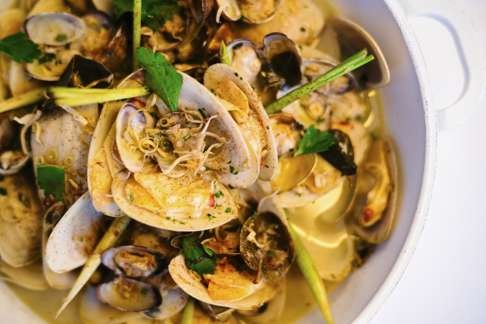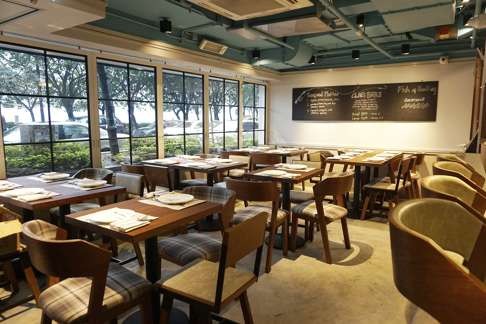
Four of Hong Kong’s best new seafood restaurants, and the people behind them
From lobster rolls to salt-crusted sea bass to line-caught tuna, new restaurants are catering to the city’s love of fish and seafood with sustainable options
After the profusion of meat-centric steakhouses and hamburger joints that opened in the past few years, it seems the new dining wave is seafood-focused restaurants, ranging from the extravagant and expensive Seafood Room down to more humble shops such as Lobster Central, which specialises in the lobster roll.
Upon entering the 8,000 sq ft space on the 26th floor of Tower 535 in Causeway Bay, guests see a massive stone tub of ice filled with fresh seafood for diners to select and have cooked for them.

He thinks of seafood as an indulgence like steak, although it doesn’t leave diners feeling as stuffed. “We wanted to expand on that idea, making the restaurant interactive and fun. Food should be enjoyed and we want people to come in and share this experience.”



When it comes to sustainability, the Italian chef, who has worked in Hong Kong for 11 years and also has Italian restaurants, Gia Trattoria and Giando, is careful about where he sources his seafood, with prawns from Australia, line-caught fish from Normandy, lobsters from France and North America, and farm-raised sea bass from Italy. He says he only orders bluefin tuna during the harvest season, which is May and June.


The restaurant is the brainchild of Mark Cholewka, managing director of Shore Hospitality Group, who saw a gap in the market for good quality seafood at affordable prices.
“We’re serving generous dinners at HK$800 that would cost HK$1,000-HK$1,200 in any other place,” Kerr says. “Originally we wanted to do a fish and chip place, but after I did a lot of research into New England food, it seemed better to offer other dishes. We revised the menu 15 times before we started serving the public.”
The restaurant gets daily deliveries of fresh seafood. Lobsters come live in tanks from Canada, while oysters are sourced from Europe, South Africa, North America, Australia, New Zealand and Japan. Scallops come from Japan, and they use local mud crabs and line-caught local sea bass and snapper.


According the Agriculture, Fisheries and Conservation Department, Hongkongers consume an average of more than 70kg of seafood per person every year.
“We have the seventh highest per capita consumption of seafood in the world,” says Dr Allen To, assistant manager of the Footprint Programme for WWF Hong Kong. “We actively promote eating seafood. When you go to a Chinese banquet, there are several types of seafood on the menu, like grouper, lobster, abalone, shrimp, and then for street food we have fishballs, shrimp and crab. Maybe people are not aware they are eating so much seafood,” he says adding that Hong Kong’s long-standing craze for Japanese food means consumption of fish has also increased.
While To is concerned about Hongkongers eating unsustainable seafood such as bluefin tuna and humphead wrasse, he notes there has been a big drop in shark fin consumption, although we still have a long way to go.
While WWF works with suppliers and restaurants to have sustainable menus, To says when it comes to seafood, diners should eat less and choose wisely, while restaurants should pick varieties that are sustainable.
Seafood Room
26/F, Tower 535, 535 Jaffe Road, Causeway Bay, tel: 3708 9668
Fishsteria
111 Queen’s Road East, Wan Chai, tel: 2343 8111
Cull ’N Pistol
Shop GA1-3, Site A, 55 Tai Hong Street, SoHo East, Lei King Wan, Sai Wan Ho, tel: 2513 0199
Lobster Central
50 Stanley Street, Central, tel: 3565 6725

